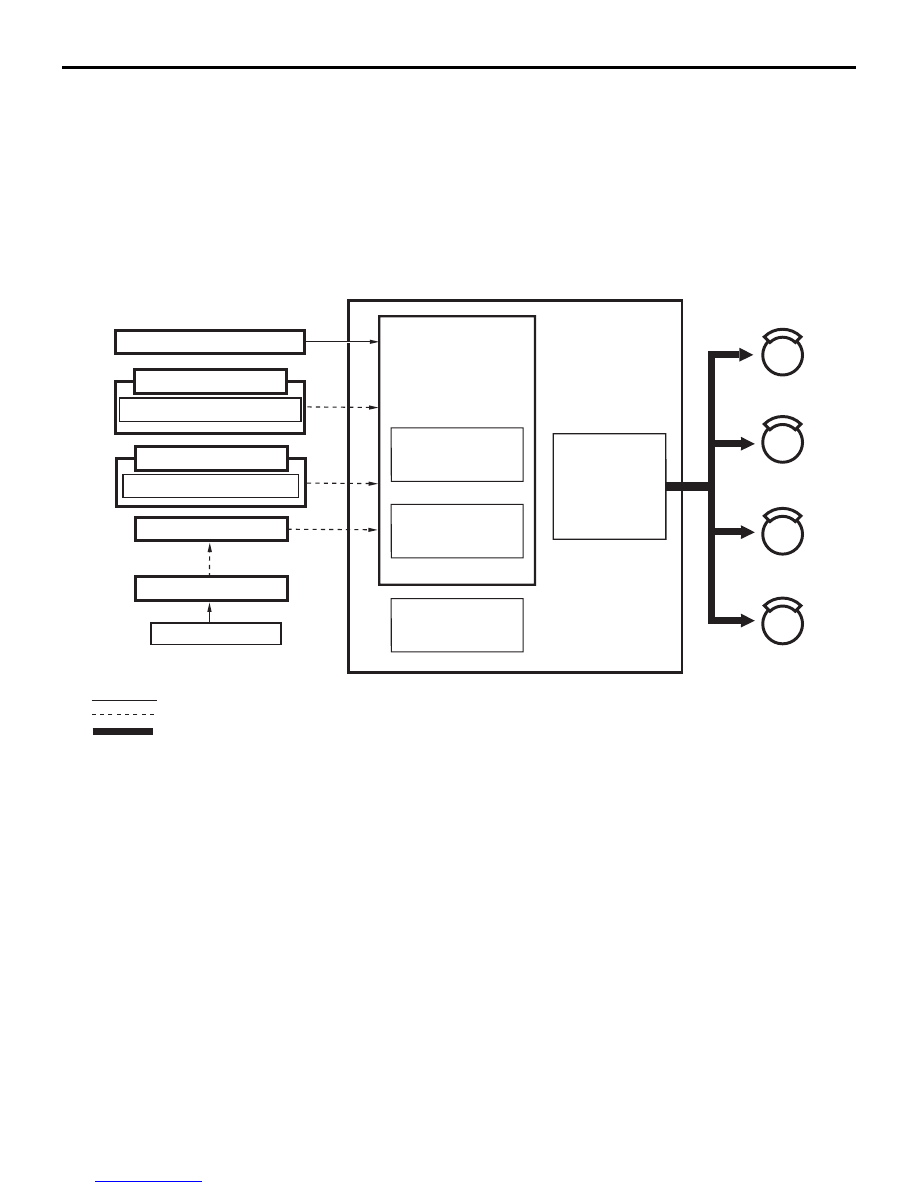Mitsubishi Outlander (2013+). Manual - part 165

ACTIVE STABILITY CONTROL SYSTEM (ASC)
ACTIVE STABILITY CONTROL SYSTEM (ASC)
35C-12
When the driving wheels slip on the slippery road
surface, TCL applies the brake automatically, sends
the signal requesting engine speed reduction to the
engine-ECU, and prevents the loss of the driving
force resulting from the slippage of the driving wheel.
Hill START ASSIST (HSA) FUNCTION
System configuration
When the vehicle has completely stopped on a steep
uphill by the service brake, ASC-ECU judges
whether or not start the HSA function control in
accordance with the signals (ETACS-ECU,
CVT-ECU, G & yaw rate sensor, brake fluid pressure
sensor, engine-ECU, wheel speed sensor).
ACB06022
gear position information
CVT-ECU
Parking brake switch
ETACS-ECU
engine related information
Engine-ECU
: Hardwire-line
: CAN line
: Brake-line
Wheel speed sensor
Combination meter
FL
FR
RL
RR
AB
Hydraulic unit
ASC-ECU
Master cylinder
pressure sensor
G and yaw rate
sensor
HSA control
Brake fluid
currently
supplied to each
wheel cylinder
is controlled.
manuals search engine